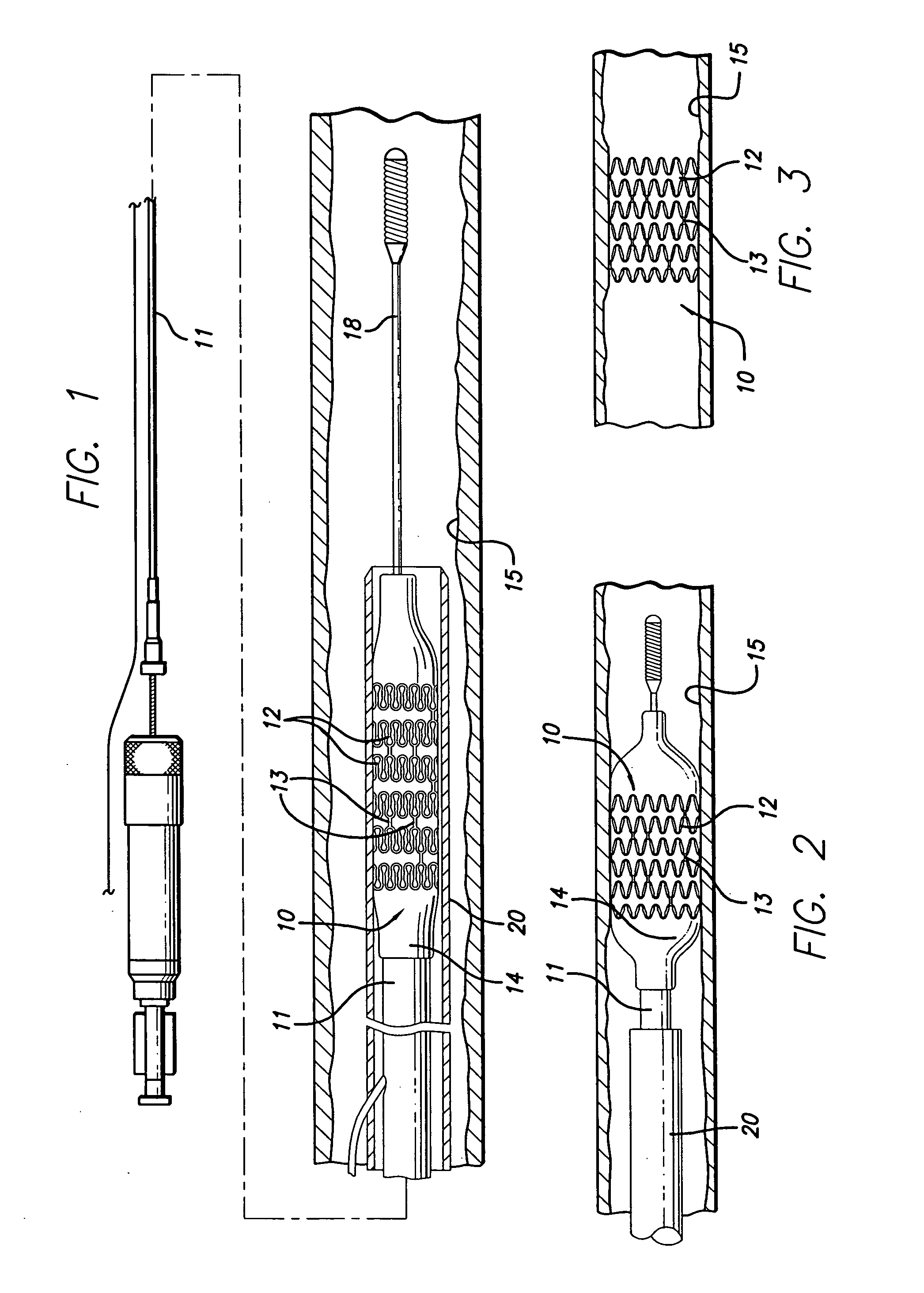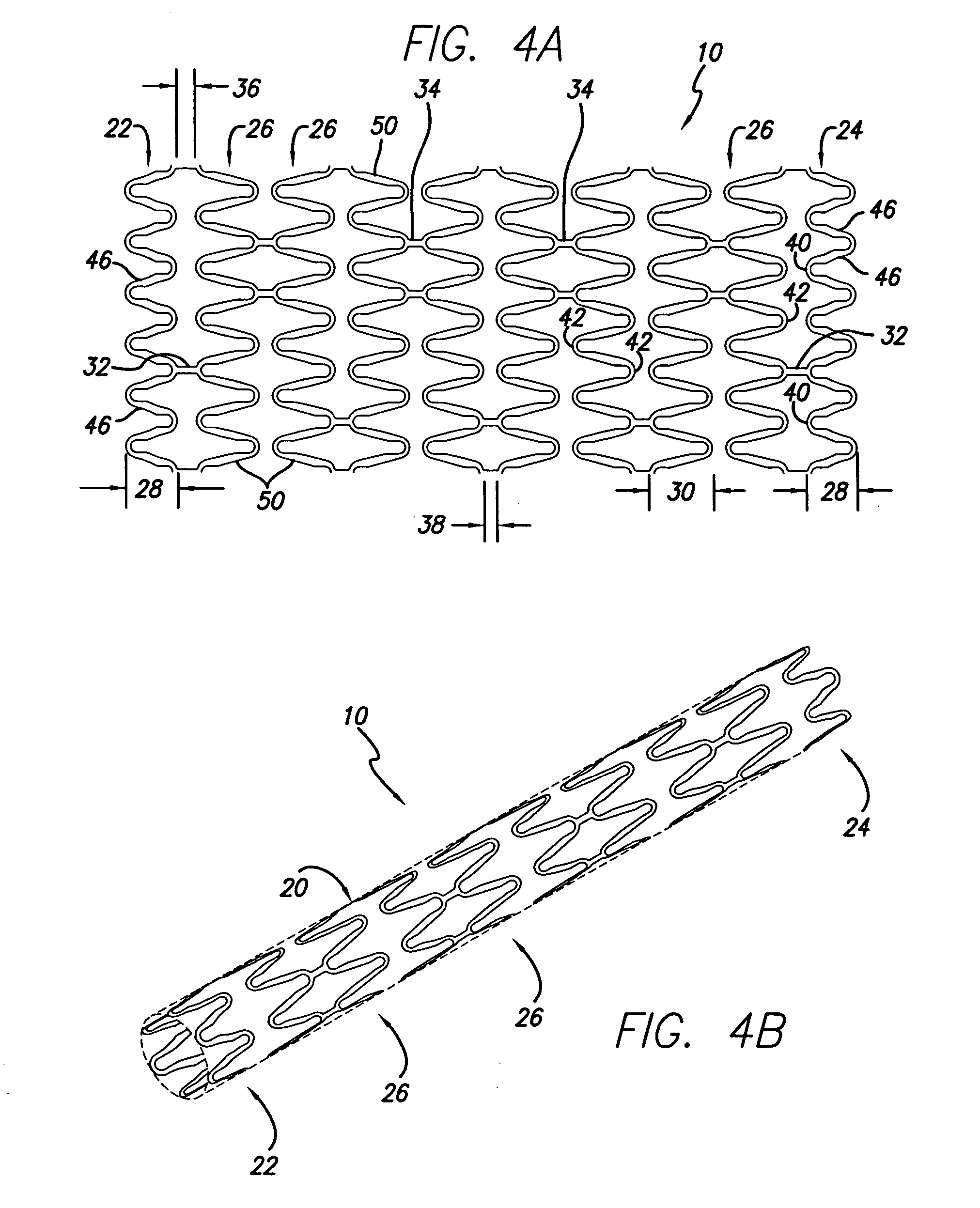Intravascular stent
a technology of endoprosthesis and stent, which is applied in the field of expandable endoprosthesis devices, can solve the problems of limited expansion range, increased manufacturing cost, and limited expansion of certain prior art stents, and achieves the effects of facilitating delivery, enhancing longitudinal flexibility and configuration, and facilitating delivery
- Summary
- Abstract
- Description
- Claims
- Application Information
AI Technical Summary
Benefits of technology
Problems solved by technology
Method used
Image
Examples
Embodiment Construction
[0025] Prior art stent designs, such as the MultiLink Stent™ manufactured by Advanced Cardiovascular Systems, Inc., Santa Clara, Calif., include plurality of cylindrical rings that are connected by three connecting members between adjacent cylindrical rings. Each of the cylindrical rings is formed of a repeating pattern of U-, Y-, and W-shaped members, typically having three repeating patterns forming each cylindrical ring. A more detailed discussion of the configuration of the MultiLink Stent™ can be found in U.S. Pat. No. 5,569,295 (Lam) and U.S. Pat. No. 5,514,154 (Lau et al.), whose contents are hereby incorporated by reference.
[0026] The present invention stent is shown in FIG. 1, where stent 10 is mounted onto delivery catheter 11. Stent 10 generally includes a plurality of radially expandable cylindrical rings 12 disposed generally coaxially and interconnected by links 13 disposed between adjacent cylindrical rings 12. The delivery catheter 11 has an expandable portion or ba...
PUM
 Login to View More
Login to View More Abstract
Description
Claims
Application Information
 Login to View More
Login to View More - R&D
- Intellectual Property
- Life Sciences
- Materials
- Tech Scout
- Unparalleled Data Quality
- Higher Quality Content
- 60% Fewer Hallucinations
Browse by: Latest US Patents, China's latest patents, Technical Efficacy Thesaurus, Application Domain, Technology Topic, Popular Technical Reports.
© 2025 PatSnap. All rights reserved.Legal|Privacy policy|Modern Slavery Act Transparency Statement|Sitemap|About US| Contact US: help@patsnap.com



